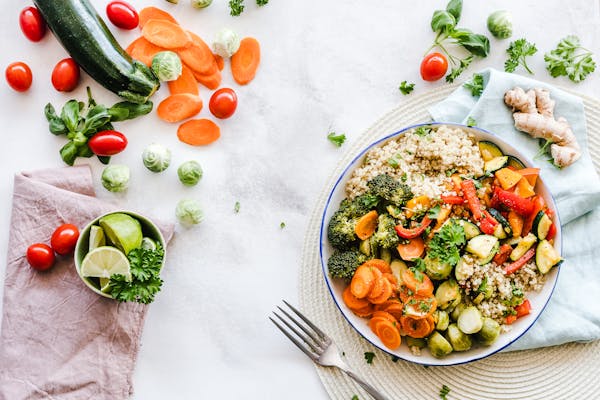How to Balance Vata, Pitta, and Kapha: The Ultimate Ayurvedic Guide
This definitive guide provides a complete roadmap to dosha harmony. Learn the Ayurvedic secrets to balance Vata, Pitta, and Kapha using personalized diet, lifestyle, and herbal remedies for profound, lasting mind-body wellness and natural healing.
At the heart of Ayurveda lies a simple yet profound truth: health is a state of dynamic balance, and illness is a symptom of imbalance. This balance is governed by the three fundamental bio-energies, or doshas: Vata, Pitta, and Kapha. Understanding how to manage these energies is the key to unlocking your body's innate intelligence and achieving vibrant, holistic health.
But how do you actually do it? This guide moves beyond theory to provide a practical, step-by-step framework for pacifying each dosha. Whether you're feeling anxious and scattered, fiery and irritable, or sluggish and unmotivated, you'll find the specific tools you need—from food and herbs to daily routines—to gently guide your system back to its natural state of equilibrium. Ready to embark on a journey of profound self-healing?

The Golden Rule of Balance: Like Increases Like, Opposites Pacify
The entire science of balancing the doshas rests on one elegant principle: the *Samanya-Vishesha Siddhanta*. This states that substances and actions with similar qualities will increase a dosha, while those with opposite qualities will decrease or pacify it. This is the master key to Ayurvedic healing, transforming your daily choices into a form of personalized medicine.
Each dosha is defined by a set of qualities (gunas). For example, Vata is cool, dry, light, and mobile. If you have excess Vata, characterized by anxiety or dry skin, eating a cold, raw salad (cool, dry, light) will only increase these symptoms. To find balance, you must apply the opposite qualities: warmth, moisture, and stability. A warm, nourishing soup and a consistent daily routine become the perfect antidote. By understanding this principle, you can intuitively choose the foods, activities, and environments that bring you back into harmony.
"Action that brings about equilibrium of the Dhatus (tissues/doshas) is the proper action; that which disturbs the equilibrium is the improper one. This is, in short, the definition of proper and improper action." - Charaka Samhita
Balancing Vata Dosha: Grounding the Energy of Movement
Vata dosha, composed of Air and Ether, governs all movement in the mind and body. When aggravated, its qualities of being **cool, dry, light, and mobile** can lead to anxiety, insomnia, dry skin, bloating, and a scattered mind. The goal of a Vata-balancing regimen is to introduce warmth, moisture, stability, and nourishment.
The Vata-Pacifying Diet: A Warm, Nourishing Embrace
Your diet is the most powerful tool for grounding Vata's airy nature. Focus on meals that are cooked, warm, moist, and substantial. The three tastes that balance Vata are **Sweet, Sour, and Salty**.
- Foods to Favor: Warm soups and stews, cooked root vegetables (carrots, beets, sweet potatoes), nourishing grains like basmati rice and cooked oats, and sweet, ripe fruits (bananas, avocados, soaked raisins). Use generous amounts of healthy fats like ghee and sesame oil.
- Foods to Reduce: Cold, dry, and light foods that increase Vata. This includes raw salads, crackers, dried fruit (unless soaked), iced drinks, and excessive beans. Stimulants like caffeine should be minimized as they can over-activate the nervous system.

Lifestyle and Herbal Support for Vata
Routine is the ultimate medicine for Vata's unpredictable nature. A consistent schedule provides a container of safety and stability that deeply calms the nervous system.
- Routine (Dinacharya): This is non-negotiable for Vata. Wake, eat, and sleep at the same times every day. To learn more, read our comprehensive guide on the Ayurvedic Daily Routine.
- Abhyanga (Self-Massage): Daily self-massage with warm sesame oil is essential. This practice deeply nourishes dry skin, lubricates joints, and provides a profound sense of groundedness.
- Exercise: Choose gentle, rhythmic activities like walking, tai chi, or restorative yoga. Avoid high-impact, jarring workouts that can aggravate Vata.
- Herbal Allies: The premier herb for balancing Vata is **Ashwagandha**. As an adaptogen, it helps the body cope with stress and builds deep vitality. Studies, such as one from the African Journal of Traditional, Complementary and Alternative Medicines, support its efficacy in managing stress. Other beneficial herbs include Licorice, Ginger, and Cinnamon. Find more in our Herb Database.
Balancing Pitta Dosha: Cooling the Fire of Transformation
Pitta dosha, made of Fire and Water, governs metabolism and all transformations. When its qualities of being **hot, sharp, light, and oily** are in excess, it can manifest as inflammation, acid reflux, skin rashes, and emotions like anger and irritability. The antidote is to cultivate coolness, calmness, and moderation.
The Pitta-Pacifying Diet: Cool, Fresh, and Sweet
To cool Pitta's fire, your diet should be refreshing and substantial without being heavy. The three tastes that balance Pitta are **Sweet, Bitter, and Astringent**.
- Foods to Favor: Sweet and juicy fruits (melons, grapes, cherries), bitter leafy greens (kale, chard), and cooling vegetables (cucumber, zucchini). Basmati rice, barley, and oats are excellent grains. Ghee and coconut oil are the best fats.
- Foods to Reduce: Foods that increase heat and acidity. This includes pungent spices (chilies, cayenne), sour foods (vinegar, aged cheese), and overly salty or fried foods. Reduce alcohol and caffeine, which are highly heating.

Lifestyle and Herbal Support for Pitta
Moderation is the key for Pitta types, who have a natural tendency to push themselves too hard. Surrendering the need for control and embracing leisure is crucial.
- Routine: Schedule regular downtime into your day. Make sure to eat your meals in a peaceful environment without multitasking.
- Environment: Spend time in nature, especially near water. A walk in the cool evening or under the moonlight is deeply soothing for Pitta.
- Exercise: Engage in moderate activities that are not overly competitive, such as swimming, hiking, or a leisurely bike ride. Avoid exercising during the hottest part of the day.
- Herbal Allies: The best herbs for Pitta are cooling and purifying. **Amla** (Indian Gooseberry) is a premier antioxidant that pacifies Pitta. Other excellent choices include **Shatavari**, Brahmi, Guduchi, and Neem.
Balancing Kapha Dosha: Invigorating and Lightening Up
Kapha dosha, composed of Earth and Water, is defined by its qualities of being **heavy, slow, cool, oily, and stable**. When in excess, Kapha leads to lethargy, weight gain, congestion, and emotional attachment. The strategy for balancing Kapha is to introduce warmth, lightness, dryness, and stimulation.
The Kapha-Pacifying Diet: Warm, Light, and Spicy
The diet for Kapha should be energizing and easy to digest, aimed at stimulating a sluggish metabolism. The three tastes that balance Kapha are **Pungent, Bitter, and Astringent**.
- Foods to Favor: A wide variety of vegetables, especially bitter greens and pungent vegetables like radishes and onions. Light grains like barley and millet are ideal. Legumes, like lentils and chickpeas, are excellent. Be generous with warming spices like ginger, black pepper, and turmeric.
- Foods to Reduce: Heavy, oily, and cold foods that increase Kapha's qualities. This includes most dairy products, fried foods, sugar, and excessive sweet or salty tastes.

Lifestyle and Herbal Support for Kapha
Activity, variety, and stimulation are the best medicine for Kapha's tendency toward inertia. A dynamic and engaging routine is essential.
- Routine: Waking up early (before 6 AM) is crucial to avoid morning sluggishness. Avoid napping during the day.
- Exercise: Vigorous, regular exercise is a must. Activities like running, cycling, dancing, or a fast-paced vinyasa yoga class help to invigorate the body and mind.
- Self-Care: Practice *Garshana* (dry brushing) before showering to stimulate the lymphatic system and circulation.
- Herbal Allies: The classic formula for Kapha is **Trikatu**, a blend of three pungent herbs that powerfully kindles digestive fire. Other beneficial herbs include Guggulu and Turmeric.
Frequently Asked Questions
How do I know which dosha is imbalanced?
First, it helps to understand your inherent constitution by taking our Prakriti Quiz. Your imbalance (*Vikriti*) is often an excess of your dominant dosha, but not always. The key is to observe your current symptoms: feelings of anxiety and being ungrounded point to Vata; irritability and inflammation suggest Pitta; and lethargy and congestion indicate Kapha.
What if I have a dual-dosha constitution (e.g., Vata-Pitta)?
For dual-dosha types, the art of balance is more nuanced. You must identify which dosha is more aggravated at any given time or consider the season. For example, in the fall (Vata season), focus on pacifying Vata. In the summer (Pitta season), focus on cooling Pitta. A qualified practitioner can help you navigate this balance.
How long does it take to balance a dosha?
The time it takes varies greatly. You might feel relief from acute symptoms (like bloating or acidity) within a few days of dietary changes. However, rebalancing deep-seated, chronic imbalances can take several months of consistent effort with diet, lifestyle, and herbs. Ayurveda is a journey, not a quick fix.

No comments:
Post a Comment